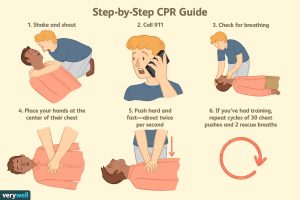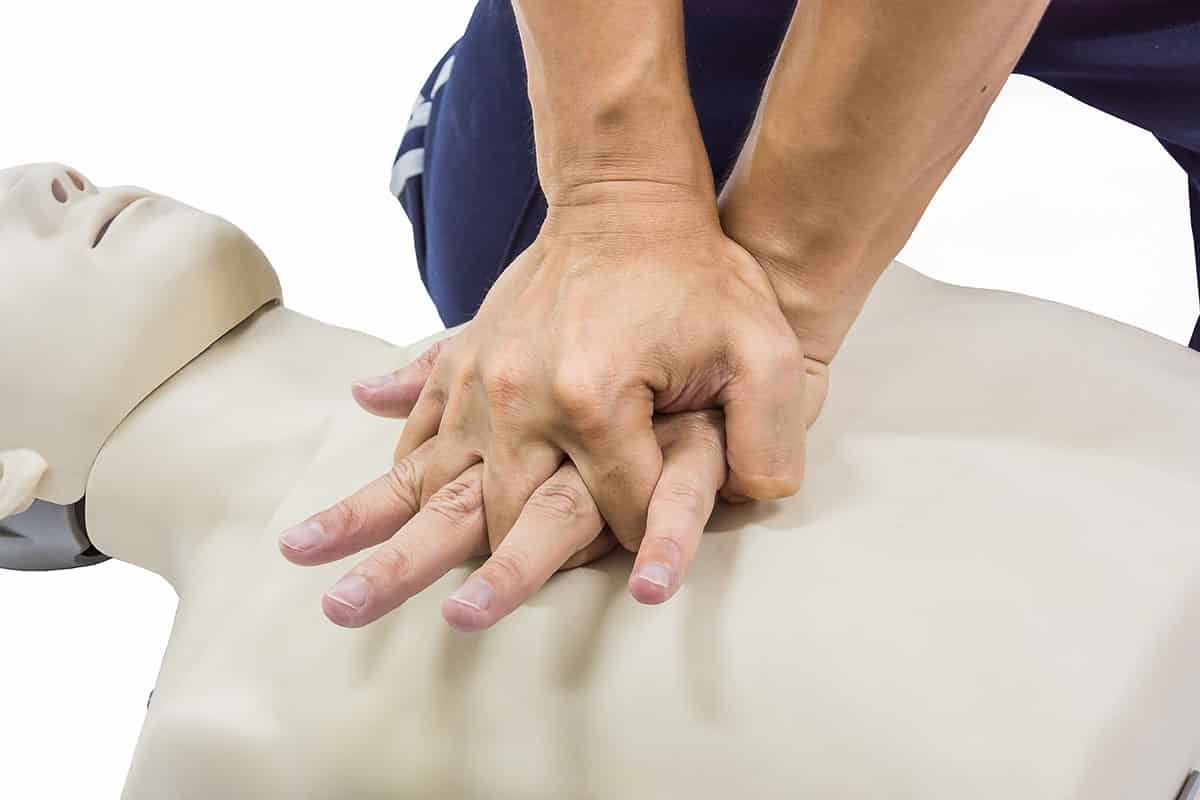Introduction:
Cardiac emergencies can happen anywhere, and being equipped with the knowledge of responding promptly is crucial. Hands-Only CPR is a simplified form of cardiopulmonary resuscitation (CPR) that focuses solely on chest compressions without the need for rescue breaths. In this comprehensive guide, we delve into the significance of Hands-Only CPR, its step-by-step procedure, and why it’s an essential skill for everyone to learn.
Why Hands-Only CPR Matters:
Cardiac arrest is a life-threatening condition where the heart suddenly stops beating effectively, leading to a lack of blood flow to vital organs. Hands-Only CPR plays a pivotal role in maintaining blood circulation until professional medical help arrives. By skipping the complex step of rescue breaths, this technique ensures that more people feel confident and capable of administering life-saving aid.

The Importance of Quick Action:
The first few minutes following a cardiac arrest are critical. Immediate intervention, such as Hands-Only CPR, can double or triple the chances of survival. Bystanders, even those without formal CPR training, can play a crucial role in these crucial moments.
Before Giving Hands-Only CPR:
Understanding when and how to apply Hands-Only CPR is essential. Here are the initial steps to take:
- Scene and Person Check:
- Always prioritize safety. Ensure the area is safe for both you and the victim.
- Gently tap the person and check for responsiveness.
- Observe for signs of rhythmic, normal breathing.
- Call for Assistance:
- If the person is unresponsive, call 911 immediately.
- If possible, delegate someone nearby to make the call, ensuring that professional help is on the way.

Performing Hands-Only CPR:
Once you’ve assessed the situation and called for help, it’s time to initiate Hands-Only CPR. Follow these steps carefully:
- Positioning:
- Lay the person on a firm, flat surface, ensuring their back is supported.
- Kneel beside the person with your knees spread about shoulder-width apart.
- Hand Placement:
- Position the heel of one hand in the center of the person’s chest.
- Interlace your fingers and keep them off the chest to allow for effective compressions.
- Body Position:
- Align your shoulders directly over your hands.
- Lock your elbows to ensure your arms remain straight during compressions.
- Continuous Compressions:
- Begin chest compressions by pushing hard and fast (at least 2 inches deep).
- Maintain a steady rhythm of 100 to 120 compressions per minute.
- Allow Chest Recovery:
- After each compression, allow the chest to return to its normal position before initiating the next compression.

Traditional CPR vs. Hands-Only CPR
| Traditional CPR | Hands-Only CPR |
|---|---|
| Involves rescue breaths | No rescue breaths involved |
| Complex technique | Simple and easy to remember |
| Suited for trained individuals | Suitable for bystanders and untrained individuals |
| Requires special training | Can be quickly learned for immediate response |
Benefits of Hands-Only CPR:
Hands-Only CPR offers several advantages, making it a preferred approach for immediate responders:
- Increased Likelihood of Bystander Assistance:
- Simplifying CPR increases the likelihood of bystander intervention during emergencies.
- More people feel confident in providing assistance without the need for extensive training.
- Less Hesitation, More Action:
- Hands-Only CPR eliminates the hesitation associated with traditional CPR techniques, encouraging quicker response times.
- Immediate action is crucial for better outcomes in cardiac emergencies.
- Accessible to All:
- The simplicity of Hands-Only CPR makes it accessible to a broader audience.
- Anyone, regardless of prior CPR training, can quickly learn and apply this technique.
Conclusion:
In emergencies, every second counts, and being equipped with the knowledge of Hands-Only CPR can be the difference between life and death. This comprehensive guide has explored the importance of Hands-Only CPR, the steps involved, and its benefits. explore other health problems By following these simple yet impactful guidelines, you can contribute to the chain of survival and provide crucial assistance until professional help arrives.
Remember, Hands-Only CPR is not just a skill for healthcare professionals—it’s a skill for everyone. Empower yourself, your family, and your community by learning and sharing this life-saving technique. The more individuals who are familiar with Hands-Only CPR, the greater the chances of saving lives in those critical moments of need.









